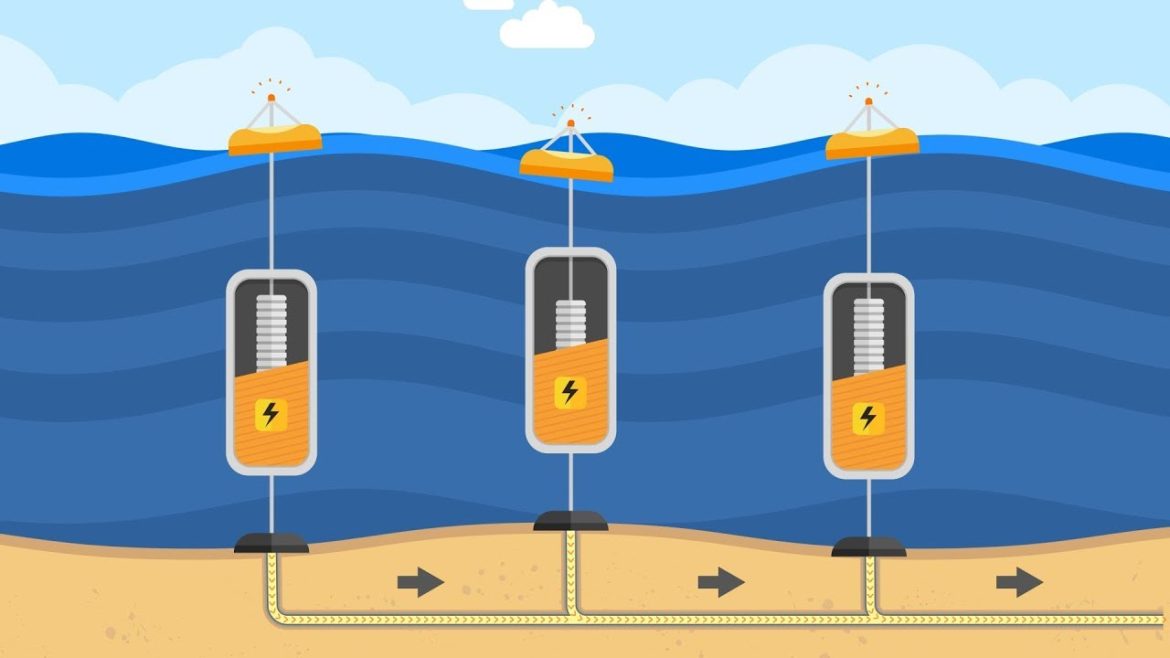In the ever-evolving quest for renewable energy, Costa Rican scientists are making waves—literally. Researchers from the School of Electromechanical Engineering at the Tecnológico de Costa Rica (TEC) have been working on an innovative project since 2015 aimed at generating electricity from the ocean’s waves. This initiative, known as “E.Wave: Olamotricity System for Electric Generation,” is a bold attempt to tap into the vast, untapped potential of Costa Rica’s marine energy resources.
The Promise and Challenge of Wave Energy
The concept behind wave energy is straightforward: use the natural motion of sea waves to generate electricity. In a country like Costa Rica, where 92% of the territory is sea, the potential for harnessing wave energy is enormous. A 2013 study, “Costa Rica: Determination of Marine Energy Potential for Electricity Generation,” estimated that the country has 2.3 gigawatts of potential wave energy. To put that into perspective, this amount of energy could consistently power 6 million Costa Rican homes every month. That’s a lot of juice from something as simple as ocean waves.
However, despite this promising potential, there’s a big catch—cost. The production of electricity from ocean waves is currently up to four times more expensive than generating it from wind or solar power. This significant financial hurdle is why wave energy technology remains under development worldwide, with countries like Ireland, France, and Spain testing various prototypes. The high costs have made it difficult for wave energy to compete with more established renewable sources.
TEC’s Innovative Approach
Recognizing these challenges, the scientists at TEC are not just tinkering with existing ideas; they’re aiming to revolutionize the technology itself. The focus of the E.Wave project has been to create a device that can generate a substantial amount of energy at a much lower cost. The ultimate goal is to make wave energy as economically viable as wind or solar power.
The technology they’ve developed operates in three simple steps. First, the motion of the waves moves a floating buoy. This buoy is connected to an oscillating arm, which in turn drives an electric generator. The generator then converts the mechanical energy from the wave motion into electrical power. This streamlined process is designed to maximize efficiency while minimizing costs.
According to Juan Guerrero, one of the lead researchers on the project, the next step is to scale up the technology. “In the future, we plan to investigate what we know as farms. We are going to place them in the sea,” Guerrero explained. These wave energy farms would consist of multiple devices working together to extract a larger amount of energy, which could help bring down costs even further.
A Game-Changer for Costa Rica’s Energy Matrix
If successful, this technology could be a game-changer for Costa Rica’s energy matrix. Currently, the country is heavily reliant on hydropower, but diversifying its energy sources is crucial for long-term sustainability. By incorporating wave energy into the mix, Costa Rica could not only reduce its carbon footprint but also ensure a more stable and resilient energy supply, especially for coastal communities.
Guerrero is optimistic about the future impact of the E.Wave project. “In the end, this will make it easier for us to bring all this energy to the coastal areas of our country, and ultimately, it will also mean that we can improve our country’s energy matrix,” he pointed out.
The project is also closely aligned with global sustainability goals. The E.Wave initiative supports the 2030 agenda and aims to contribute to the global objective of achieving carbon neutrality by 2050. As Guerrero noted, “One of the ways to contribute to reducing the carbon footprint is through the generation of clean energy using ocean waves. And in this project, what we are trying to do is just that—to impact the cost of energy production so that in the near future it can supply the energy grid.”
Overcoming the Cost Barrier
While the potential is undeniable, the financial challenges remain significant. The team at TEC is fully aware that for wave energy to become a mainstream power source, it must be cost-competitive. This is why their efforts are focused on refining the technology to reduce the cost per kilowatt of energy produced.
By achieving this, Costa Rica could set a precedent for other countries with vast coastlines but untapped wave energy potential. If the E.Wave project can demonstrate that wave energy is not just a pipe dream but a viable, cost-effective option, it could pave the way for broader adoption worldwide.
Riding the Wave to a Sustainable Future
The work being done by scientists at TEC is a testament to Costa Rica’s commitment to innovation and sustainability. While the road ahead is challenging, the potential rewards are enormous. Imagine a future where the waves crashing on Costa Rica’s shores are not just a beautiful natural phenomenon but also a powerful source of clean, renewable energy.
As the E.Wave project continues to develop, it’s clear that Costa Rica is not content to rest on its laurels. The country is already a leader in renewable energy, but with initiatives like this, it’s aiming to stay at the forefront of the global push towards a more sustainable future.
By tackling the financial challenges head-on and focusing on technological innovation, the team at TEC is helping to ensure that wave energy becomes a significant part of Costa Rica’s energy portfolio. And who knows? In a few years, the waves lapping against the coast might be powering your home.

